Carpet moths
Carpet disinfection, carpet disinfection, piece carpet disinfection, wool carpet disinfection, Persian carpet disinfection, oriental carpet disinfection, silk carpet disinfection, Ozone carpet cleaning is provided by our company to our clients according to their needs and desires in superior quality as per our internal company standards, IICRC™ guidelines and norms and expertly implemented PERSIAN® system in our carpet and fabric cleaning facility.
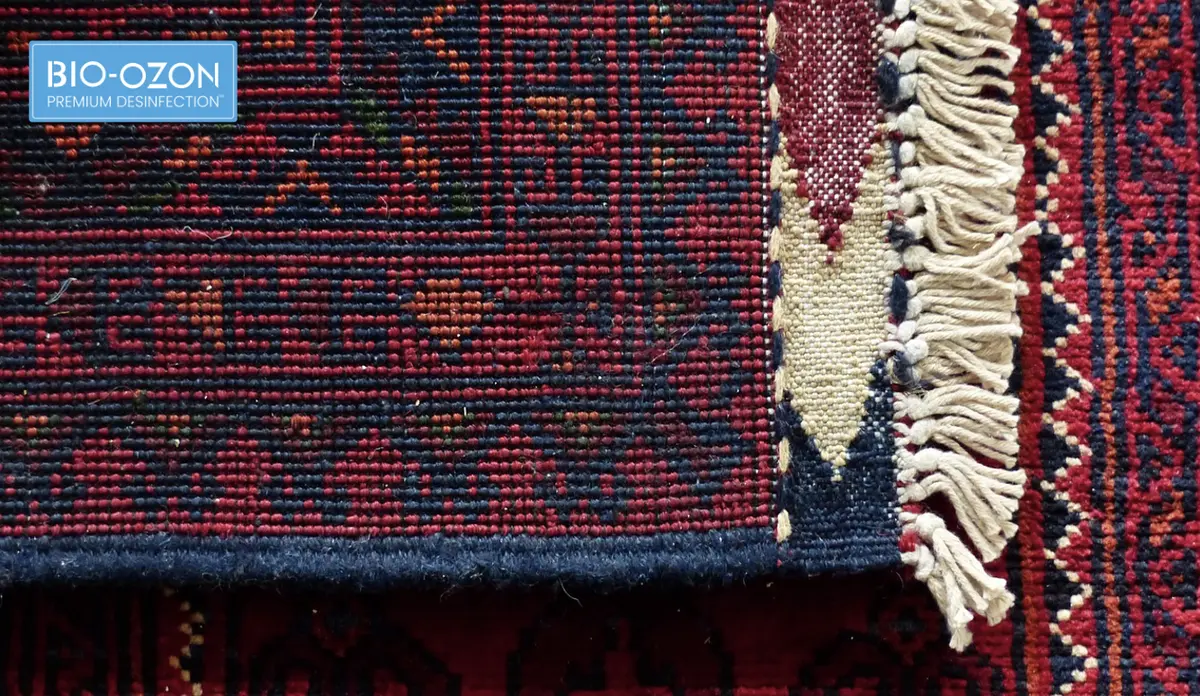
 the PERSIAN® trademark defines the Carpet Service® branded technology concept of an expertly trained implementation company dedicated to the regular maintenance, ozone and UV disinfection, cleaning, revitalization and impregnation of synthetic, natural, wool, Persian and silk carpets, fabric and leather sofas, chairs and upholstery materials. This branded concept brings the utmost professionalism in full synergy with maintaining ethical, environmental and quality performance standards including contractual guarantee of the services provided by the contractor.
the PERSIAN® trademark defines the Carpet Service® branded technology concept of an expertly trained implementation company dedicated to the regular maintenance, ozone and UV disinfection, cleaning, revitalization and impregnation of synthetic, natural, wool, Persian and silk carpets, fabric and leather sofas, chairs and upholstery materials. This branded concept brings the utmost professionalism in full synergy with maintaining ethical, environmental and quality performance standards including contractual guarantee of the services provided by the contractor.
The Clothing moth (Tineola bisselliella) is a tiny moth in the moth family, between 4 and 8 millimetres in size, which is a well-known and feared pest in many households. The butterfly is interesting because it does not need to drink to live, as it creates the necessary water through metabolism. The actual pest is not the butterfly (the adult moth), but its larvae, which feed on keratin, or hornworm, found in some natural materials. It is thus one of the few animal species capable of digesting wool. Caterpillars, the most destructive stage of the dress moth, slow their growth under less favourable conditions. If they have a rest and enough food, such as the much-loved wool-blended carpet, they can survive in the larval stage for up to two years! While the adult dress moth lives an average of 14 days, the larva lives a month to two years, depending on conditions. Ideal conditions for moths are 19 to 25 degrees.
Basic moth species
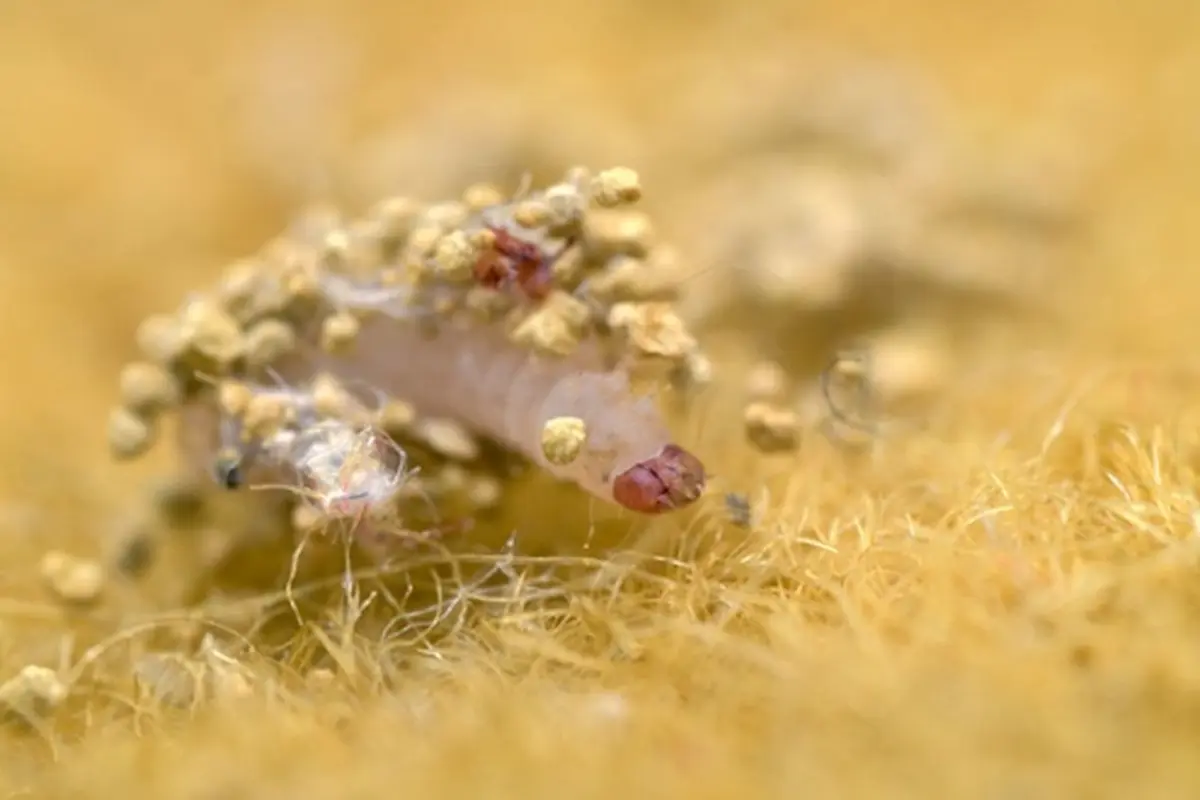 The dress moth (Tineola bisselliella) is the most common pest of wool textiles. It is a moth about 8 to 18 mm in size, its forewings are light ochre to yellow, glossy, without markings or spots, and its hindwings are greyish yellow. The butterfly caterpillar damages mainly animal material (woollen fabrics, fur, leather). The female lays about 200 whitish eggs in woollen material in rows between the fibres where the eggs attach. Immediately after hatching, the caterpillar begins to feed on the wool fibre. In doing so, it secretes fibres that allow it to move easily and weave whitish passages through them, which serve as shelter. This stage lasts from 1 to 5 months, depending on the ambient temperature, and the pupal stage lasts about 25 days. In unheated rooms the moth has 1.5 to 2 generations per year, in heated rooms up to 3 generations.
The dress moth (Tineola bisselliella) is the most common pest of wool textiles. It is a moth about 8 to 18 mm in size, its forewings are light ochre to yellow, glossy, without markings or spots, and its hindwings are greyish yellow. The butterfly caterpillar damages mainly animal material (woollen fabrics, fur, leather). The female lays about 200 whitish eggs in woollen material in rows between the fibres where the eggs attach. Immediately after hatching, the caterpillar begins to feed on the wool fibre. In doing so, it secretes fibres that allow it to move easily and weave whitish passages through them, which serve as shelter. This stage lasts from 1 to 5 months, depending on the ambient temperature, and the pupal stage lasts about 25 days. In unheated rooms the moth has 1.5 to 2 generations per year, in heated rooms up to 3 generations.
The upholstery moth (Trichophaga tapetzella) damages wool and cotton fabrics, furniture fabrics and upholstery, wool blankets, hides and furs, paper wallpaper and feathers. Unlike the clothes moth, its forewings are two-coloured – the root third is blackish brown, the rest yellowish whitish, the hindwings are monochrome grey, and its size is 12 to 24 mm.
The Fur Moth (Tinea pellionella) has forewings that are yellow-grey, shiny, with a few dark spots, hindwings are light grey, and size is 11 to 17 mm. Unlike the dress moth, its caterpillar spins a cocoon which it drags with it permanently until pupation.
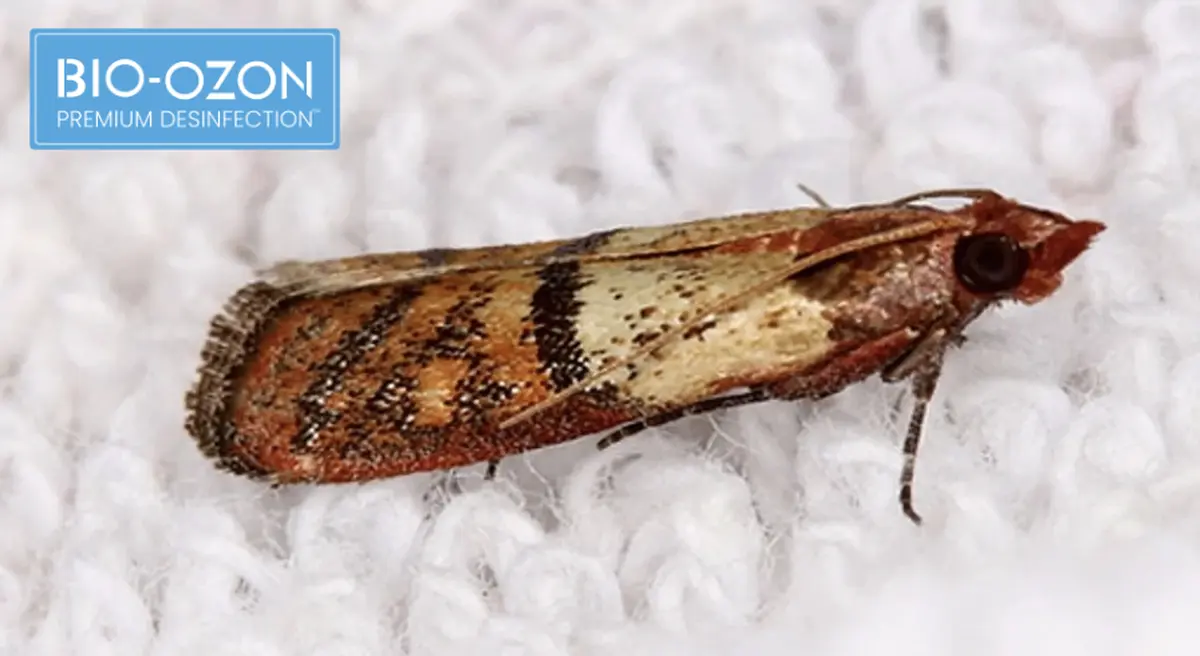
How to prevent moths
Regularly vacuuming up dust and dirt is no guarantee that the moth will not attack the carpet. Gently vacuuming the carpet first on the reverse side and then on the face in the direction of the pile with a vacuum cleaner without a rotary brush is sufficient. This prevents the fibres from being soiled to the depth of the pile, the moths from settling in the reverse side of the carpet and then very likely infesting the entire carpet and all the woollen materials around it. This spread of moths is very rapid. Unless the carpets are moulted from the reverse (even for suspended carpets), in most cases moth infestation is only detected after a long period of time when the damage to the carpet is more extensive in more than one place.
This is because moths need quiet and unventilated areas to develop their eggs. Simply walking on the carpet is not enough to prevent moths. In the winter months, if it is not currently snowing, it is recommended to lay carpets on a mat or dry snow and let them freeze over the day. The snow must be dry and must not cause the carpet fibres to become wet and possibly freeze further. Permanent breakage of the fibres could occur. Another precaution against moths is to place anti-moth products near the wool materials, changing the products regularly every 3 months.
 In the event of a major infestation, it is advisable to have carpets ozone gassed in an ozone chamber by a vetted professional company. Another way to prevent moth infestation is to use the chemical Molantin SP. When properly applied to wool textiles, it can prevent this biological infestation. The application of the product should be done by spraying the carpet from both sides. Molantin SP should be applied according to the manufacturer’s recommendations and always in consultation with textile restoration experts. Not all woollen textiles and carpets can be treated with this product due to their age and condition. Carpets and textiles with which children and animals come into contact are not suitable for application of Molantin SP.
In the event of a major infestation, it is advisable to have carpets ozone gassed in an ozone chamber by a vetted professional company. Another way to prevent moth infestation is to use the chemical Molantin SP. When properly applied to wool textiles, it can prevent this biological infestation. The application of the product should be done by spraying the carpet from both sides. Molantin SP should be applied according to the manufacturer’s recommendations and always in consultation with textile restoration experts. Not all woollen textiles and carpets can be treated with this product due to their age and condition. Carpets and textiles with which children and animals come into contact are not suitable for application of Molantin SP.
What is ozone cleaning and disinfection?
Ozone cleaning is an innovative method of disinfection that uses the natural substance ozone (O3), a molecule composed of three oxygen atoms. Ozone is a naturally occurring gas that has strong oxidizing properties and is effective in killing bacteria, viruses, fungi and other microorganisms. These properties make ozone cleaning a very effective method for disinfecting areas and removing odors without the use of harsh chemicals.
Ozone and its properties
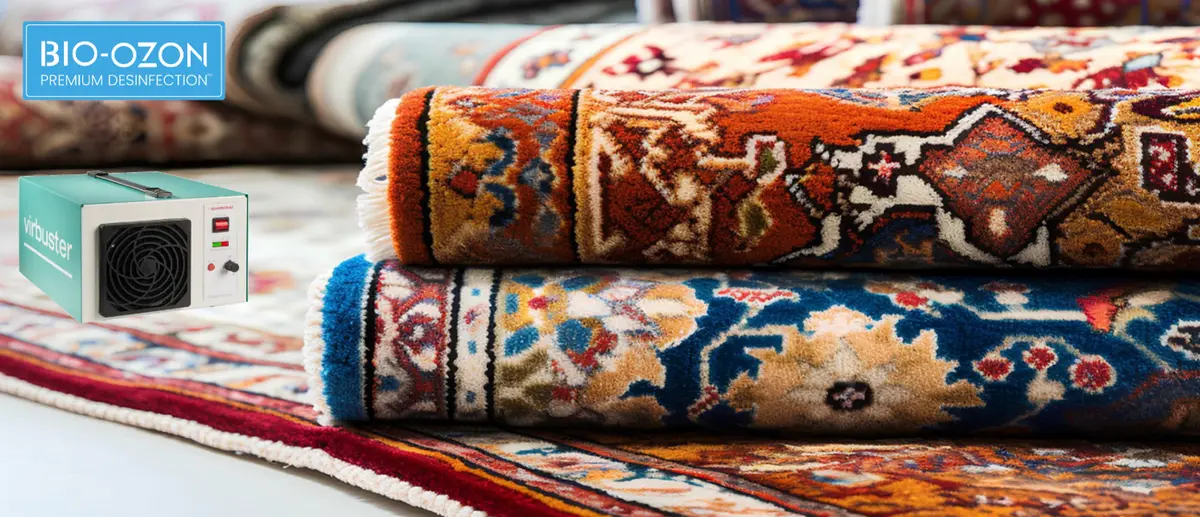 Ozone is an element that is commonly found in nature – 20 to 30 Km above the Earth’s surface, where it is formed under the action of the UV spectrum of solar radiation from atmospheric oxygen or energy. Three molecules of O2 form two molecules of O3. This reaction forms the ozone layer – the ozonosphere – which provides protection against UVC (short-wave “disinfectant” ultraviolet) and UVB (mid-wave ultraviolet) rays. However, ozone is primarily a disinfectant. Have you noticed that flu season comes in the fall and with the rainy season? During this time, clouds limit UV radiation and bacteria and viruses are much easier to keep in the air. When there is excess ozone in the air, it kills bacteria, viruses and fungi.
Ozone is an element that is commonly found in nature – 20 to 30 Km above the Earth’s surface, where it is formed under the action of the UV spectrum of solar radiation from atmospheric oxygen or energy. Three molecules of O2 form two molecules of O3. This reaction forms the ozone layer – the ozonosphere – which provides protection against UVC (short-wave “disinfectant” ultraviolet) and UVB (mid-wave ultraviolet) rays. However, ozone is primarily a disinfectant. Have you noticed that flu season comes in the fall and with the rainy season? During this time, clouds limit UV radiation and bacteria and viruses are much easier to keep in the air. When there is excess ozone in the air, it kills bacteria, viruses and fungi.
The ozone cleaning process involves the creation of ozone using a special ozone generator that converts oxygen (O2) in the air into ozone (O3). This ozone is then dispersed throughout the space where it effectively eliminates microorganisms and neutralizes odors. Once the process is complete, the ozone is quickly converted back to oxygen, ensuring that no harmful residue remains after the cleaning.
What does ozone cleaning and natural antibacterial disinfection bring?
Antibacterial ozone cleaning of textiles and surfaces is environmentally friendly, highly effective and safe. Everything is carried out in our ozone / drying special chamber. Here are the main reasons why more and more customers are satisfied with ozone cleaning and disinfection:
Environmentally friendly solution
Ozone cleaning is a natural method that uses no chemicals or toxic substances. Unlike traditional disinfection methods, which can contain harsh chemicals, ozone is a purely natural substance. Once the process is complete, the ozone breaks down into oxygen, meaning it leaves no harmful residue or environmental impact.
Strong disinfecting power
Ozone is one of the strongest oxidizing agents and has the ability to destroy a wide range of bacteria, viruses, fungi and other microorganisms. Ozone cleaning is therefore an excellent choice for places that require a high level of hygiene, such as hospitals, offices, hotels or households with children and allergy sufferers.
Elimination of unpleasant odours
One of the greatest benefits of ozone cleaning is its ability to neutralize odors at the molecular level. Ozone binds to odor molecules and breaks them down, eliminating even strong and lingering odors such as those from smoking, cooking, mold, animals or chemicals. Unlike air fresheners, which only mask odors, ozone actually eliminates odors.
Effective mould removal
Mold is a serious health risk, especially for people with respiratory problems or weakened immune systems. Ozone effectively destroys mould spores while killing the microorganisms that create mould. Ozone cleaning is therefore ideal for moisture-prone areas such as bathrooms, basements or older buildings.
Improving air quality
Indoor air quality is crucial to the health and well-being of occupants. Bacteria, viruses, allergens, dust and chemicals can negatively affect air quality and cause allergies, respiratory problems or fatigue. Ozone purification helps clean the air and improve air quality, which is especially important for people with allergies or asthma.
Quick and effective process
Ozone cleaning is a fast process that does not require long hours of work or drying. Once the ozone generator is turned on, the ozone starts working immediately, and once the cleaning is complete, the air is ozone-free and ready for safe use within a short period of time. This means that the premises are ready for use almost immediately after the process is complete.
Technically useful properties of ozone
Effective removal of microorganisms
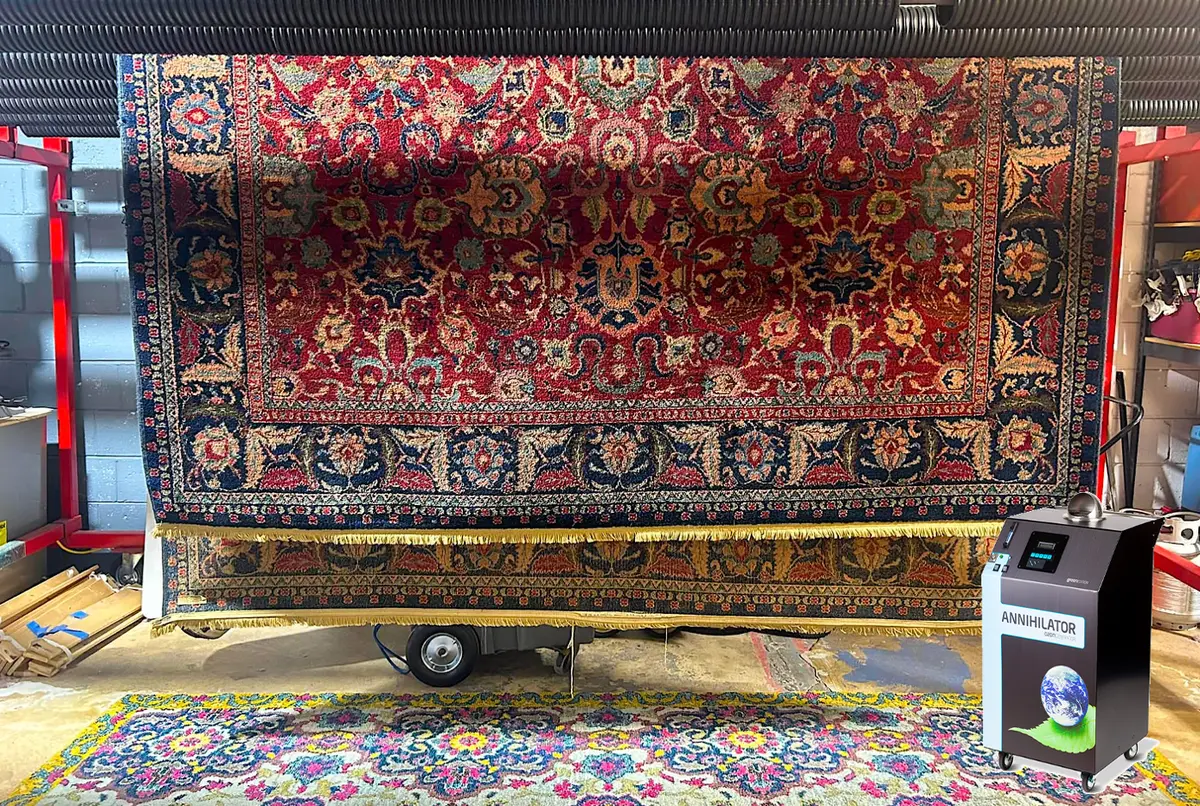 Due to the powerful oxidizing properties of ozone, ozone cleaning is one of the most effective methods for eliminating bacteria, viruses and mold. Ozone penetrates deep into surfaces and textiles, ensuring that even the most stubborn microorganisms are removed.
Due to the powerful oxidizing properties of ozone, ozone cleaning is one of the most effective methods for eliminating bacteria, viruses and mold. Ozone penetrates deep into surfaces and textiles, ensuring that even the most stubborn microorganisms are removed.
Chemical-free
One of the main benefits of ozone cleaning is that it uses no chemicals or toxic substances. Ozone is a natural substance that converts back to oxygen after use, ensuring that no chemical residue is left behind after the process. This method is therefore ideal for people who are sensitive to chemical cleaners.
Elimination of odours
Ozone cleaning is very effective at removing unpleasant odours, whether they are from smoking, animals, cooking, mould or chemicals. Ozone breaks down odor molecules at the molecular level, effectively eliminating odors rather than covering them up like air fresheners.
Environmentally friendly
Since ozone cleaning uses no harmful chemicals and ozone naturally breaks down into oxygen, this method is very environmentally friendly. You don’t have to worry about air pollution or water sources that could be affected by toxic residues.
Safety and speed
The ozone cleaning process is fast and efficient. In a matter of hours, your space can be cleaned and ready to be used again. After the process, there is no need for long ventilation or additional steps to remove cleaning agents. After ozone neutralization, the air is fresh and safe.
Cleaning and ozone disinfection is a modern and environmentally friendly method of disinfection that ensures fabrics and surfaces are hygienically clean, fresh and free of unpleasant odors. The process is fast, effective and safe, making it the ideal choice for our carpet, cushion, upholstery, mattress and interior disinfection services. We will ensure that your environment is clean, healthy and comfortable for everyone.